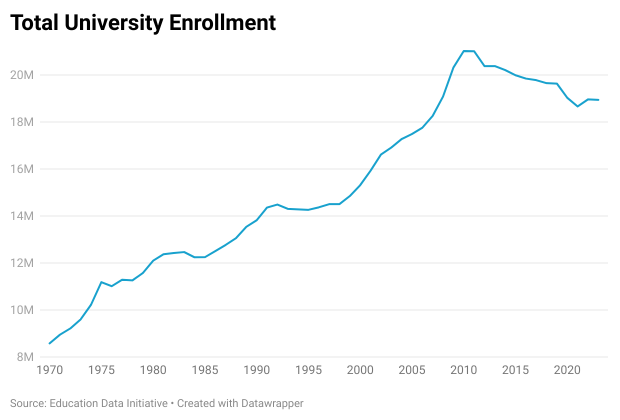New Year. Same problems.
A big one on many minds as we steamroll our way into the November Presidential Elections?
Student loan forgiveness.
Back in December, I outlined the only equitable solution to the student loan crisis: Allow student borrowers who get in over their heads to declare bankruptcy, just like any other borrower.
Bankruptcy isn’t pleasant. It’s humiliating. But it exists for a reason.
It allows borrowers to escape from unpayable debts that would otherwise haunt them for the rest of their lives. It also forces lenders to be more responsible about who they lend to and under what terms. And it allows those who act responsibly to NOT be punished for their good behavior.
It’s absurd that student debt isn’t viewed the same as a business loan or a credit card line. If you have the means to service your debt, you pay it. If you don’t, you go to bankruptcy court and hash out a deal. That’s how the system works.
Of course, we could also ask why the federal government is in the business of student loan sharking to begin with.
If universities can judge a student’s character well enough during the admissions process… why can’t they judge their creditworthiness as well? Come to that, why can’t they make the loans themselves?
Harvard has an endowment north of $50 billion. You’re telling me they couldn’t use that nest egg to offer low-interest loans to their students?
Perhaps credit underwriting could be a “context-dependent decision” like allowing on-campus antisemitic bullying!
Unfortunately, forcing universities to operate like businesses – and yes, they are a business – isn’t likely to happen in this lifetime.
And in any event, they have a more pressing crisis to deal with.
The Coming Crisis?
Cheap federal debt enabled universities to raise their prices faster and higher than regular CPI inflation. But that wasn’t the only contributing factor.
Demographics also played a major part. When you had virtually unlimited new high school graduates fighting for a limited number of slots, rip-you-face-off inflation was inevitable.
My, how the hens have come home to roost now.
College enrollment fell 9% between 2019 and 2023. In the past decade, enrollment has fallen by nearly two million students, as you can see in this chart.

Obviously, the pandemic played a role here. If the costs were ever justified, they certainly became a lot more unjustified when classes went virtual. I’m not so sure I would have been able to maintain my own interest in college, back in the day, had there been no keg parties and I was stuck taking classes from my dorm room.
But there is also a larger story here, and it has to do with demographics.
The number of American live births was pretty stable from the late 1980s through the early 2000s, meaning that the surge in college enrollment was due primarily to a larger percentage of high school graduates deciding to attend college. But at some point, you hit limits. Not every high school student is college material.
And here’s where it gets interesting. Births hit a peak of 4.32 million in 2007… and that number has been falling ever since. Births are now clocking in at about 600,000 per year less than their 2007 peaks.
The good news is that campus “safe spaces” will be so much more… spacious…
We can laugh about the university crisis. In the end, life will go on, and if a few second or third-tier colleges close their doors, it’s not going to change much.
But the same demographic crisis budding for Social Security is no laughing matter.
The Social Security trust fund is forecast to be fully depleted in about 11 years. As I wrote earlier in December, that puts the government in a sticky situation.
The easiest way out for them is to “means test” and take Social Security away from those of us who “don’t need it…” or to simply inflate the obligations away.
That’s why The Freeport Investor members already have several inflation protection investments in the model portfolio. To discover what they are, plus the other stocks we’re holding in preparation for the November elections, watch this presentation now.
To life, liberty, and the pursuit of wealth…